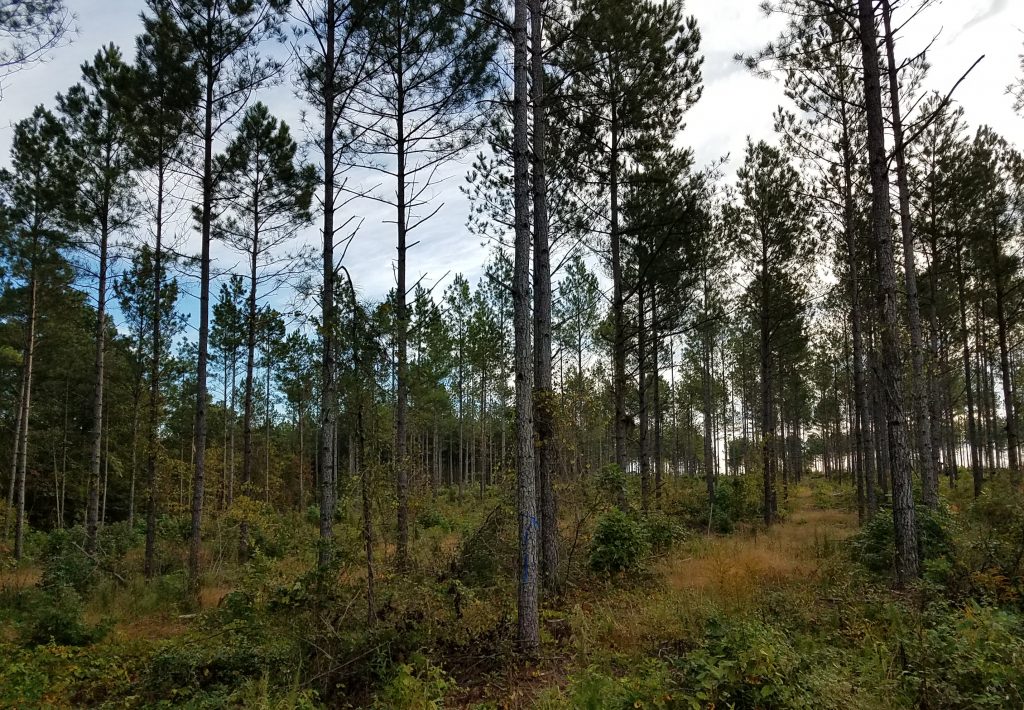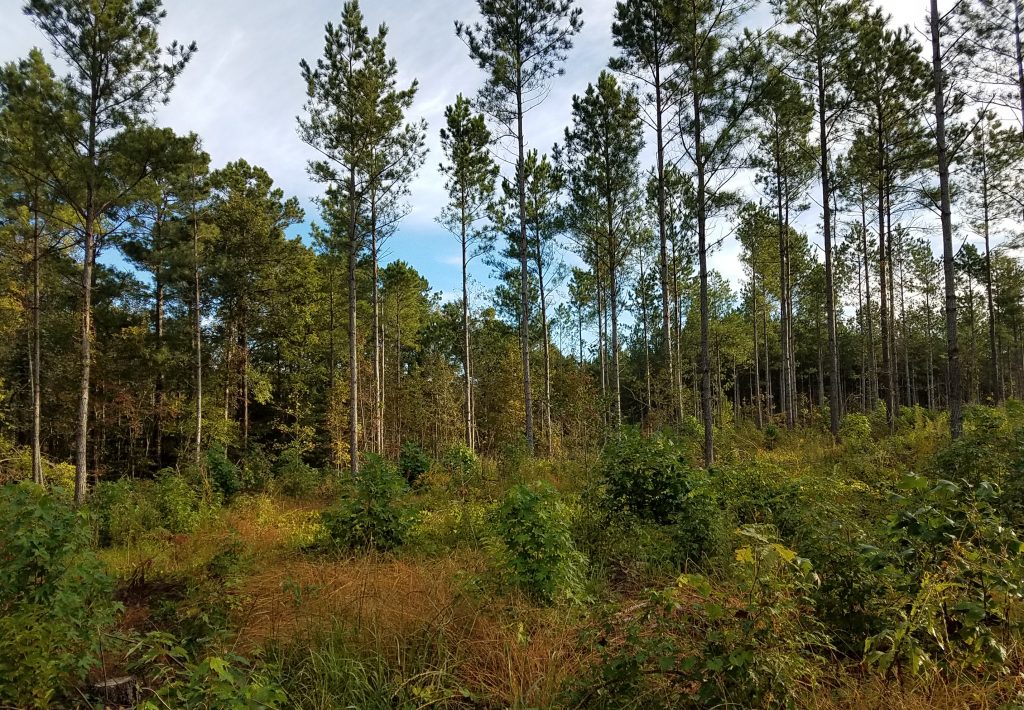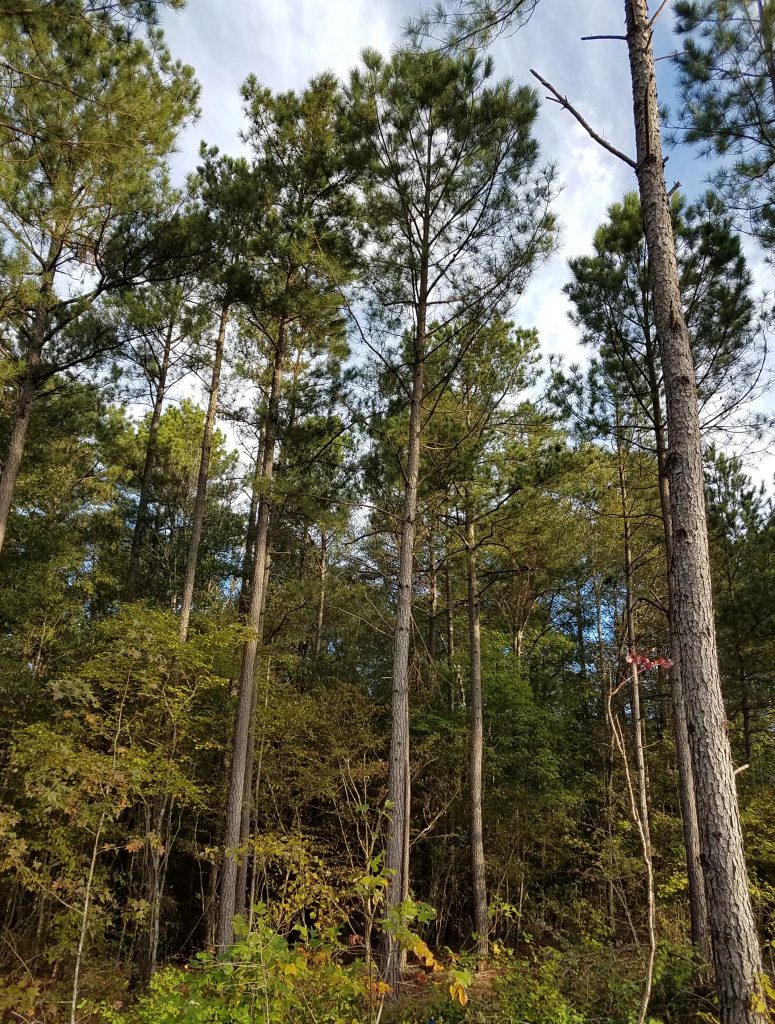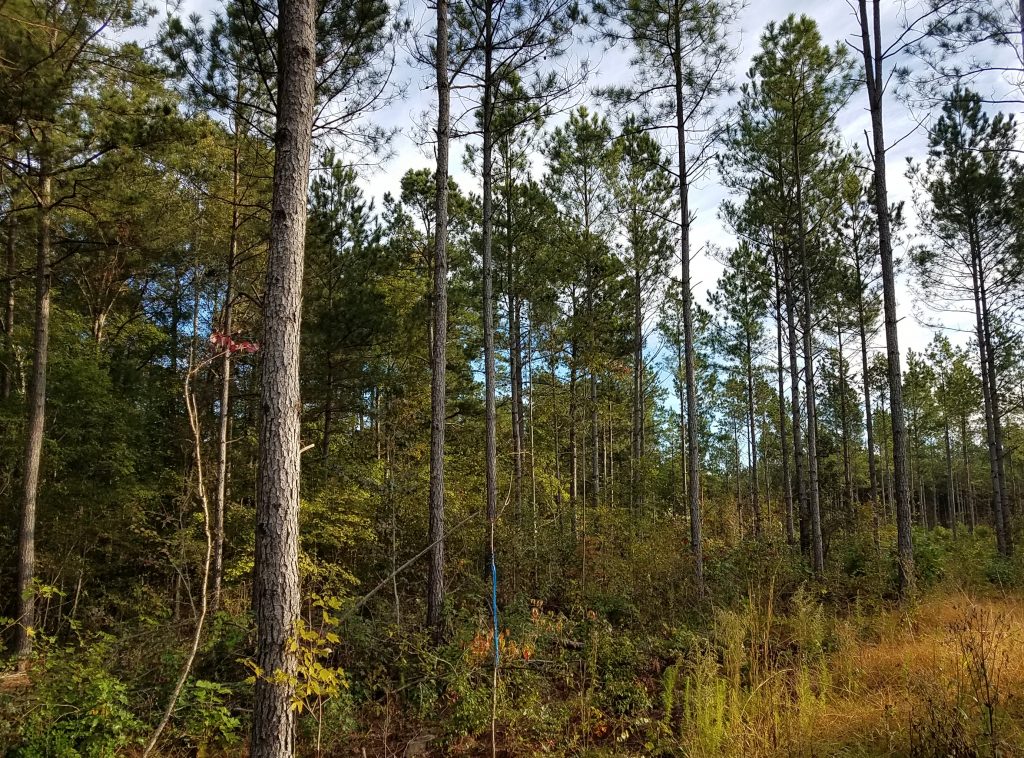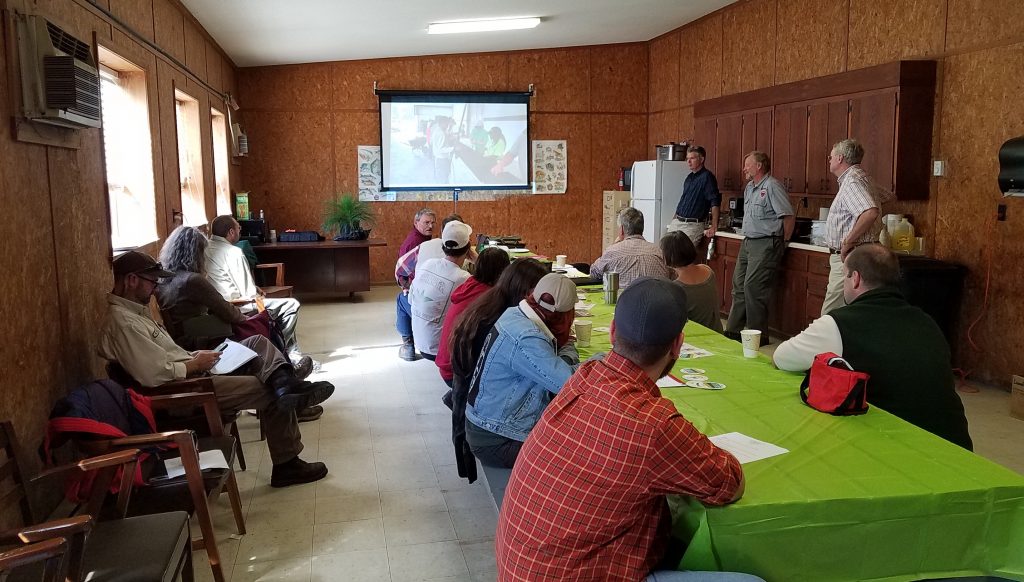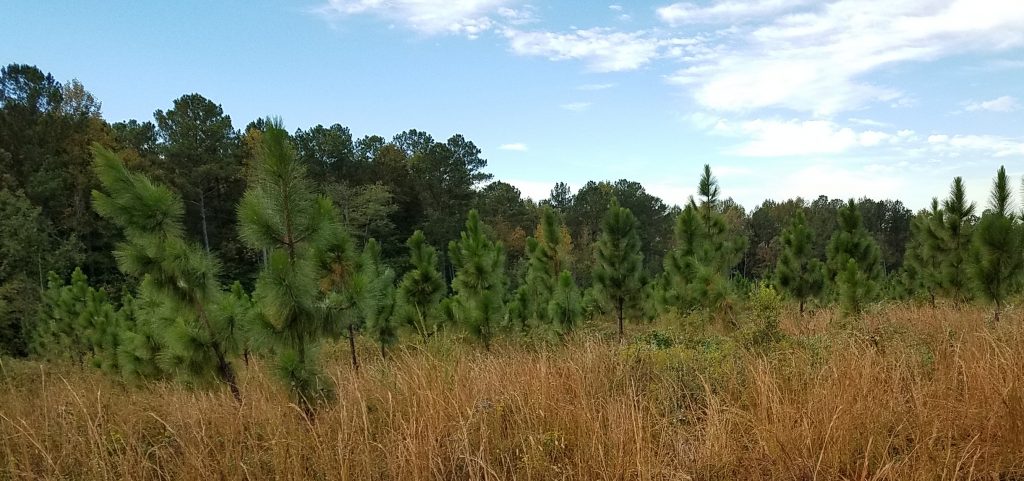The Longleaf Cooperators is an informal group of people and organizations interested in restoring the longleaf pine ecology to Virginia. I went down to the Garland Gray Virginia nursery. More on that below.
I stopped at the Freeman place on the way down and enjoyed a beautiful time in the morning quiet dews and damps. We thinned the 22-year-old loblolly pines to 50 basal area and made quarter acre clearing in each acre. The DoF will burn under the trees and in the clearings and we will plant longleaf pine in December. By “we” I mean the kids and me, i.e. Mariza, Espen, Alex, Brendan and Chrissy.
It will not be very scientific. I have the planting sticks and the longleaf come in plugs. They are planted something like 10×10. You take four steps, push in the tool. Plant in the pine and push the dirt in with your foot. It is hard work, but rewarding.
It is great that they are willing to help, and I think it will be a wonderful experience that will continue to pay aesthetic and emotional dividends for lifetimes. Thank you.
I spent some time walking in the clearings, enjoying the immersion in nature and looking at the fire lines that Adam Smith at DoF has put in. I just love what we are creating, and it is a wonderful feeling just being in these woods. I will not see the completion of this project. As a matter of fact, nobody will see the completion because it is never done. That is a big part of the wonder. We can be part of the never ending change.
I have no artistic talent. (I tried to study “saxette” in 6th grade. Teacher told me that I was talent free and not to come back.) I cannot play music or paint pictures. This is my creative outlet. What I like about it is that I do not do it by myself, but rather can immerse myself in the greater whole of nature and human community. This is why I want the kids to be part. It is their share and years from now they can look at what they helped create and marvel.
The plan with this tract is to thin, as we did, burn as we will, and plant longleaf. It will create a kind of uneven aged forest, the type you might have found here in 1607. It will be not merely sustainable but regenerative. And this is more broadly what they longleaf cooperators are working to do. The longleaf ecology is the most diverse in non-tropical North America. There are a great variety of plants and animals in longleaf pine ecology and 920 documented species that live ONLY in longleaf ecology.
Notice that I usually do not call it a longleaf forest but use the clumsier term “longleaf ecology.” This is because a longleaf forest is more than the trees. The marvel of the longleaf ecology is that it is as much a grass and forbs system as a forest. Fire keeps the forest open, so that sunlight gets to the surface where a great variety of plants can grow, and animals can thrive.
In 1607, it is estimated 93 million acres of longleaf ecology thrived in southeastern America. Today there are only around 3 million acres and a few years ago there were only 200 in Virginia – NOT 200 acres. We are talking 200 trees. That was it. We are coming back now.
On our Freeman place, we are working to reestablish this WHOLE ecology. We are planting “pollinator habitat” with warm season grasses and wildflowers. I think it is already beautiful, as you seen in the pictures, but it will get better.


